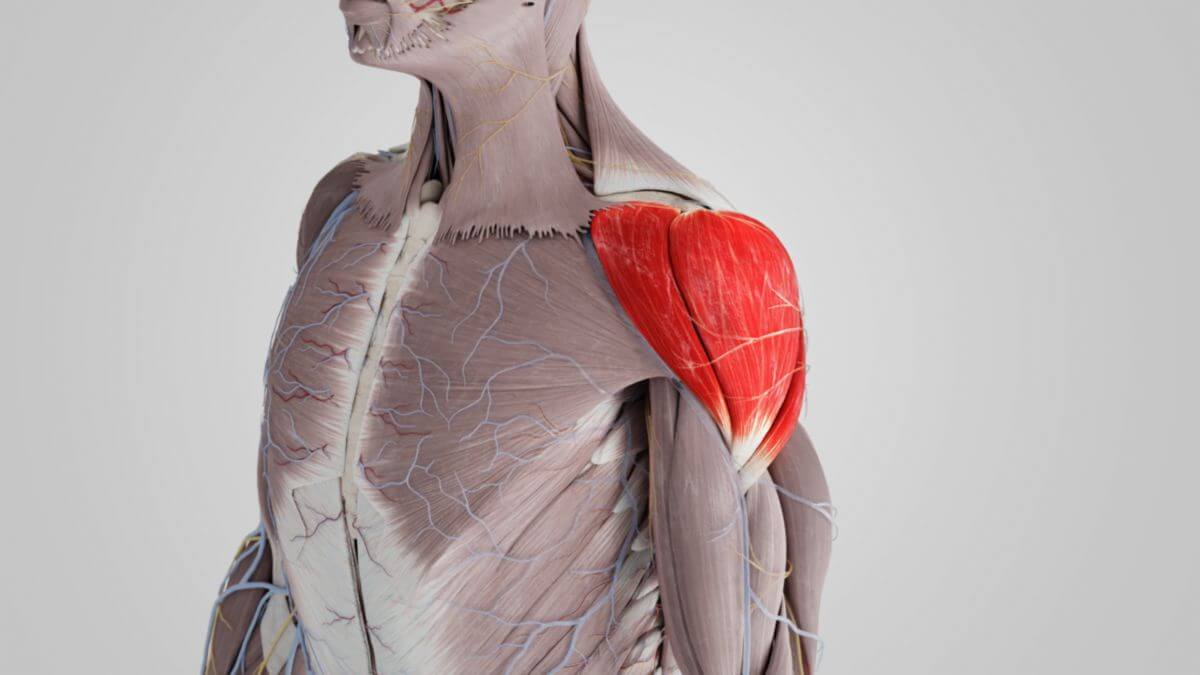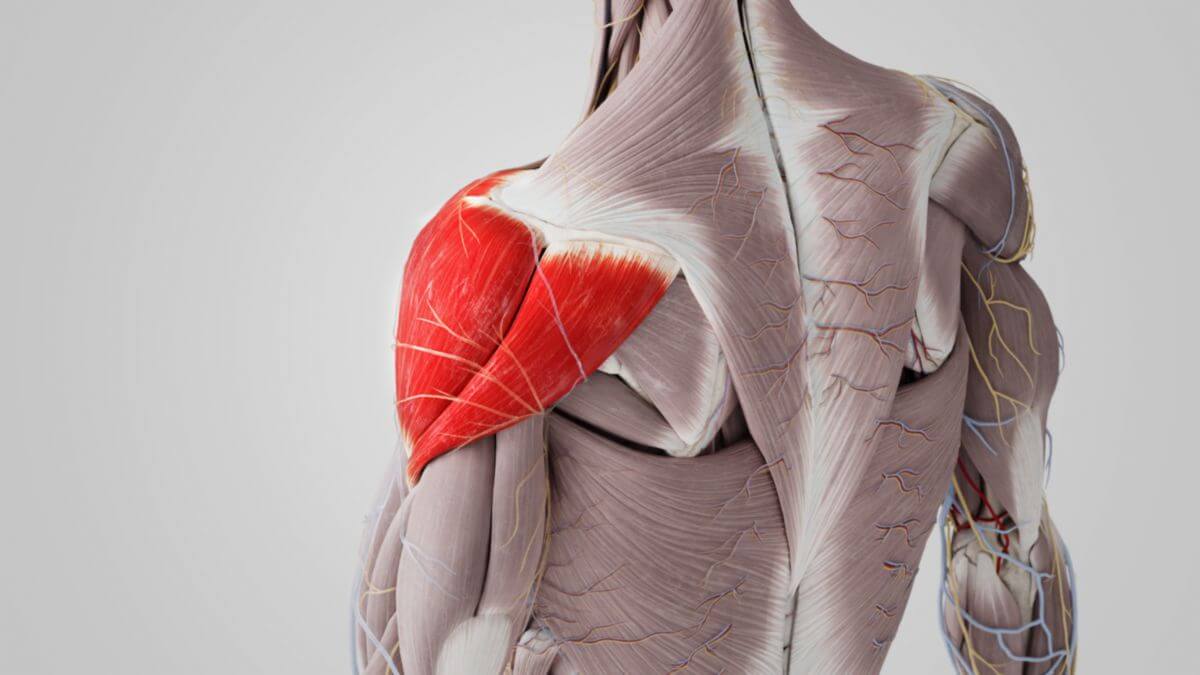Corpus: Deltoid muscle
1. Definition
The deltoid muscle belongs to the dorsal group of shoulder muscles. It is a strong, broadly spread, triangular muscle that envelops the proximal part of the humerus from cranial, ventral, dorsal, and lateral sides.
2. Anatomy
2.1. Origin
The deltoid muscle can be divided into three parts, each originating from different surfaces:
- Clavicular part: Anterior fibers originating from the lateral third of the clavicle. This part has parallel fibers.
- Acromial part: Superior fibers originating from the acromion. This muscle section is primarily pennate.
- Spinal part: Posterior fibers originating from the spine of the scapula.
2.2. Insertion
The deltoid muscle inserts into the deltoid tuberosity of the humerus (upper arm bone).
2.3. Fascia
The muscle is covered by a tight connective tissue sheath, the deltoid fascia.
3. Innervation
The innervation of the deltoid muscle is provided by the axillary nerve from the posterior cord of the brachial plexus (segments: C5-C6). Additionally, there is accessory innervation from the ventral branches of the thoracic nerves.
4. Topography
The muscle acts like a cap over the shoulder joint and the rotator cuff beneath it. The cephalic vein runs in the groove between the deltoid muscle and the pectoralis major muscle, the deltopectoral groove.
5. Function
The functions of the deltoid muscle are diverse and complex. Depending on which parts of the muscle are tensed, different movements result: The acromial part causes abduction of the arm. For abduction above 60°, the other two parts assist in the movement. The acromial part, along with the clavicular part, causes anteflexion of the arm. Conversely, when the acromial part and the spinal part contract together, they cause retroflexion of the arm. With the arm hanging down, the clavicular part assists in internal rotation, and the spinal part assists in external rotation. As the arm is adducted from an abducted position, the clavicular and spinal parts assist in adduction below the 60° mark (abduction axis). Additionally, the spinal part prevents further internal rotation during adduction.
6. Clinic
The deltoid muscle is often used for intramuscular injections of vaccines or medications, as the risk of nerve damage is relatively low here. With paralysis of the muscle, various problems arise. Abduction is almost impossible and can hardly be compensated for by the supraspinatus muscle and the biceps brachii muscle. Additionally, the muscular joint security provided by the deltoid muscle is lost. The arm is in an adducted and internally rotated position. Injuries to the deltoid muscle can occur in isolation (e.g., post-traumatic) or as part of a rotator cuff tear. Injuries following previous shoulder surgery are referred to as deltoid detachment or dehiscence.




